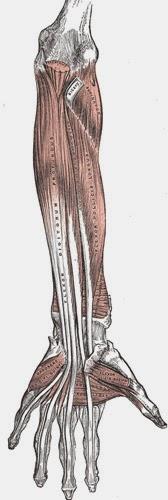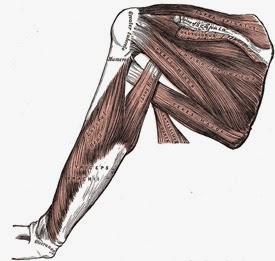
As with the other essential skills of Yoga for Healthy Aging (strength, balance and agility), we have looked at flexibility in different ways over the course of time here at YFHA. I thought it was high time to have another look at this essential skill and give it its proper due! Now, a lot a folks on the street already consider modern yoga mostly a practice of “stretching,” so flexibility is on their mind as soon as the word “yoga” is uttered. And most of the men I meet on the street and ask if they have tried to do yoga, respond, “No, I’m too stiff and inflexible!” To which I usually reply, “then yoga is just what you need!”
In the grand scheme of things, maintaining flexibility is essential for living a full, active life. From the simplest daily activities, like bending down to put your shoes and socks on or buttoning up a shirt, to the more skillful actions of playing a musical instrument or doing detailed bead work, big and small muscles need to be able to contract and lengthen effectively, and our joints, the pivot points of all movement, need to be able to move through their full range of motion. For the joints, moving through the full range of motion goes beyond their job as movement pivot points, but extends to being able to move the synovial fluid, which lubricates and cushions the joints, all around the joint surfaces. Synovial fluid also delivers nutrition throughout the joint space and removes waste from inside the joint. In other words, movement helps maintain the health and function of the joints!
 Most of us know from experience and observation that flexibility can decrease as we age. The American Academy of Orthopedic Surgeons notes the following realities about our aging muscles:
Most of us know from experience and observation that flexibility can decrease as we age. The American Academy of Orthopedic Surgeons notes the following realities about our aging muscles:- As muscles age, they begin to shrink and lose mass. This is a natural process, but a sedentary lifestyle can accelerate it.
- The number and size of muscle fibers also decrease. Thus, it takes muscles longer to respond in our 50s than they did in our 20s.
- The water content of tendons, the cord-like tissues that attach muscles to bones, decreases as we age. This makes the tissues stiffer and less able to tolerate stress.
- Joint motion becomes more restricted and flexibility decreases with age because of changes in tendons and ligaments.
- As the cushioning cartilage begins to break down from a lifetime of use, joints become inflamed and arthritic.
In past posts, we’ve looked at several neurological reflexes that connect the muscles to the spinal cord and brain that are involved in how the muscles lengthen, due to their elastic ability to stretch beyond their resting length, and how they contract or shorten beyond their resting length. Shari did a thorough job of discussing the three main reflexes that affect how our muscles respond to our “stretching” poses in yoga: the stretch reflex, autogenic inhibition, and reciprocal inhibition (to get the details, see Flexibility and Aging).
 Some of these reflexes have evolved to help the brain effectively monitor the amount of stretch a muscle is experiencing, so as to determine if it is safe for the muscle to be stretching, and, if not, to try to protect the muscle from potential injury. Still others have evolved to allow one muscle group to contract while its antagonist on the other side of the joint is told to remain uncontracted, so as to permit a desired action to take place. A good yoga example of this is if you are lying on your back and lift your right leg up in the air, the quadraceps muscle contracts and shortens at the front of the hip joint to create the movement, but simultaneously, the brain tells the hamstring muscle to relax, so there is little or no resistance from the back of the hip joint. We take advantage of this in yoga to actually lengthen the hamstrings more.
Some of these reflexes have evolved to help the brain effectively monitor the amount of stretch a muscle is experiencing, so as to determine if it is safe for the muscle to be stretching, and, if not, to try to protect the muscle from potential injury. Still others have evolved to allow one muscle group to contract while its antagonist on the other side of the joint is told to remain uncontracted, so as to permit a desired action to take place. A good yoga example of this is if you are lying on your back and lift your right leg up in the air, the quadraceps muscle contracts and shortens at the front of the hip joint to create the movement, but simultaneously, the brain tells the hamstring muscle to relax, so there is little or no resistance from the back of the hip joint. We take advantage of this in yoga to actually lengthen the hamstrings more.More in how these reflexes apply to yoga practice in a minute. First, I wanted to also share with you some newer information that gets at the molecular level of how we improve elasticity of the muscles. This is mostly for you science geeks out there, but even if science is not your thing, it is still very cool that scientist are still working on unraveling how we stretch and maintain or lose flexibility in our muscles. An article in Science Daily reports that a team of researchers at Columbia University report the discovery of a new form of mechanical memory that adjusts the elasticity of muscles to their history of stretching. It involves a complex protein molecule called titin that was thought to be inactive for a long time, and a chemical process called oxidation that occurs as the titin molecule lengthens during stretching. As one of the researchers (who is a yoga practitioner) noted:
"As a yoga aficionado, I believe that we are starting to understand the increase in flexibility induced by yoga. A pose like downward-facing dog is a highly effective way to unfold the knots in titin, enabling modifications that make the protein remember that it has to remain unfolded and soft."
So if we practice regularly, we are likely taking advantage of this mechanical memory of our titin molecules. The practical application of the muscle reflexes and new research to improve our flexibility is distilled in the following recommendations:
- Slow, dynamic movements in and out of poses can allow gradual muscle lengthening without triggering the muscles protective reflex. This could be a good way to warm up for static stretches.
- With static, held stretches, entering into the stretch slowly will again allow for elastic lengthening to take place more easily. According to Shari, if we hold a pose for more than 6 -20 seconds, we can stimulate the autogenic inhibitory reflex to trigger a relaxation in the muscle, so the timing of the hold is important.
 If you stretch a particular muscle or muscle group regularly, probably at least every other day (we don’t want to overdo it and cause overuse injuries!), we can take advantage of the molecular changes that can lead to more sustained flexibility over time. With big gaps in practice, however, our muscles are likely to return to our pre-practice length more quickly.
If you stretch a particular muscle or muscle group regularly, probably at least every other day (we don’t want to overdo it and cause overuse injuries!), we can take advantage of the molecular changes that can lead to more sustained flexibility over time. With big gaps in practice, however, our muscles are likely to return to our pre-practice length more quickly.So if you needed yet another reason, the importance of regular home practice has a direct impact on gaining and maintaining flexibility in your entire body. Have you had your flexibility practice today?

